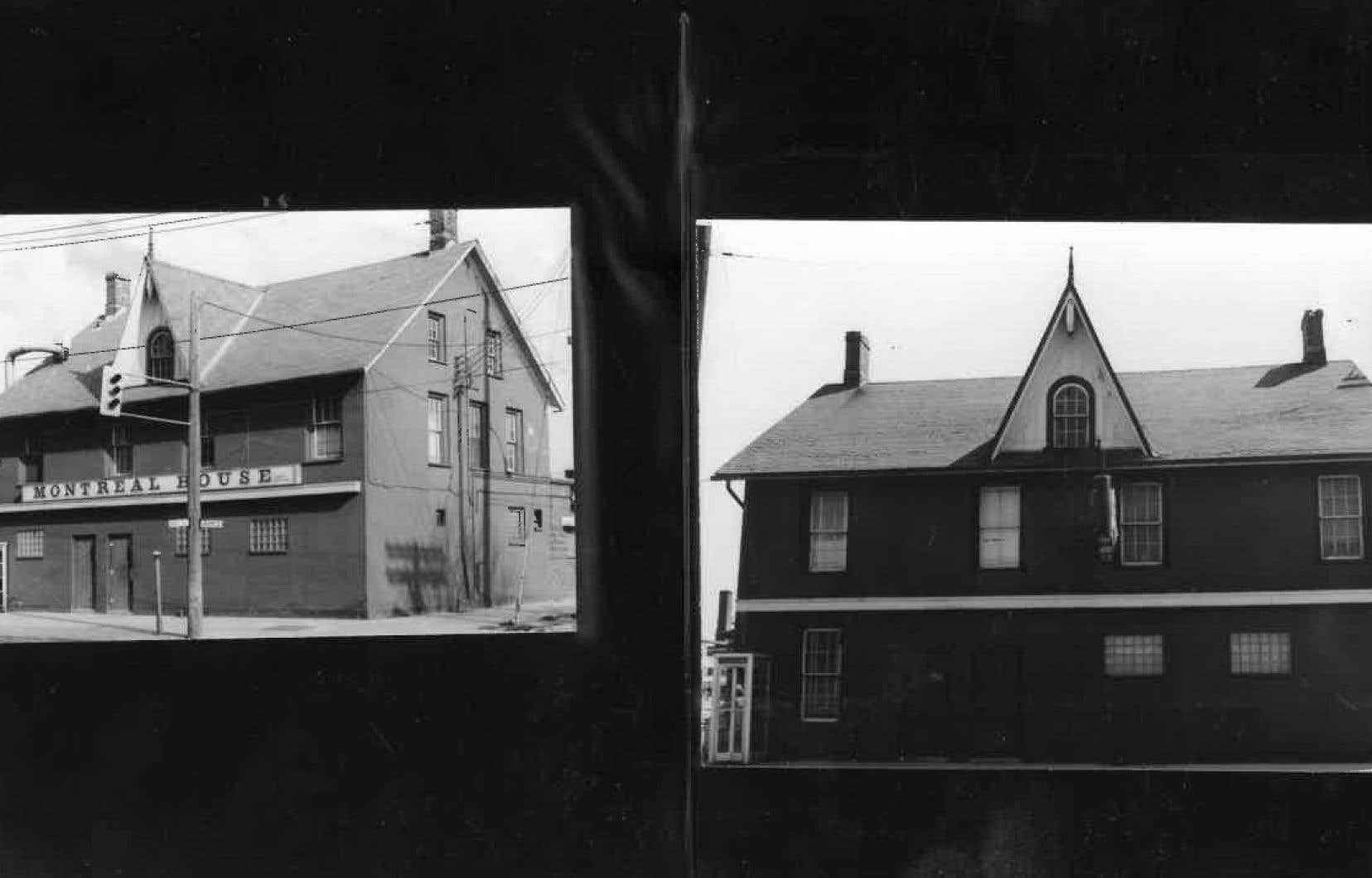A stone’s throw from the main shopping streets of Peterborough, Ontario, near the banks of the Otonabee River, stands the Montreal House, a 19th century red-brick, Gothic Revival building.e century. While the building will soon be demolished to make way for a real estate project, some experts are questioning the Quebec roots of this mythical place.
On July 18, Peterborough City Council chose not to designate the building, which now houses a restaurant, under the Ontario Heritage Act, a move that would have prevented its demolition. A municipal preservation committee had nevertheless recommended it a few weeks earlier because of the architecture of the building and its history. Formerly, the building served as a hotel and tavern for Quebec lumberjacks who came to work north of the municipality, in the Kawarthas region, in the 19th century.e century.
The arrival of Québécois in Peterborough almost 200 years ago is not questioned by historians, but some wonder how closely the place is linked to them. Elwood Jones, a history professor emeritus at Trent University, notes for example that this place bears the name of the city of Montreal, whereas the French-speaking forest workers came mainly from the region of Quebec. “You would expect a name tied to their hometown,” he notes.
Place of passage for Quebecers
According to the Peterborough Heritage Division, the first owners of the place were not French-speaking, but rather Scottish. The father-son duo Harvey sold the building to Joseph Brault, a native of La Prairie, who added a bar to what was then a rooming house. A Montrealer took over, then handed over the bar to an English Canadian in 1910. Between 1870 and 1910, the permanent tenants of the rooms were Quebec workers and merchants, explains the municipality.
At the time, Quebeckers were recruited by logging companies, such as the Mossom Boyd Company, whose archival documents were studied by Parks Canada in 1981.
The company would have paid deposits to Quebec workers to transport them to Bobcaygeon, 50 kilometers from Peterborough; a Catholic church still standing in the village, Our Lady Queen of Peace, was built for company workers, according to the Municipality of Kawartha Lakes.
Quebec workers lived in the forest in inhospitable conditions and with little food; several French-speaking workers at the company fell ill.
Mossom Boyd Company records only cite the presence of male laborers in the makeshift camps. The same could be said of the tavern, which until 1992 only welcomed men; women were not banned, the City says, but documents from the 1970s seem to contradict it. This policy, adopted when Joseph Brault obtained a license in 1874, surprised Dan Malleck, a professor at Brock University who is interested in the history of liquor regulation. The culture of consumption was “less taboo” in Quebec than in Ontario and could have encouraged the owner, of Quebec origin, to allow women there, he says.
“For men only”
The long-standing politics of the establishment once aroused particular interest in the country, enough that today we can get an idea of the atmosphere that reigned there thanks to documents of the time. In 1976, journalist Scott Young — father of singer Neil Young — stopped there with a woman, but the bartender refused to serve her. Keith Brown, a former MPP, was then the owner.
“I asked the bartender if he had heard of the new law that abolished the licensing of alcohol to men only,” Scott Young wrote at the time. “I don’t know anything about that,” replied the employee. After being told by the chairman of the Liquor License Board of Ontario that the bar could technically serve women, Scott Young criticized the women for not trying to enforce their rights. “Peterborough beer drinkers are sheep. They don’t believe in human rights, he wrote, or they would rebel. »
Dan Malleck says it’s possible the male-only drinking permit was granted because the establishment had already violated the law. “The permit system was designed to manage how people drink in bars,” he says. But Elwood Jones and his former colleague in the Department of History at Trent University, Dale Standen, note that the Montreal House was not even located in the former French-speaking quarter of Peterborough, south of downtown. “The clientele was probably larger than just Quebecers,” says Dale Standen.
A specific migration
The Quebecers left for Peterborough for a specific reason, explains Elwood Jones: they followed the timber trade. The historian says that, initially, workers from the region of Quebec exported to England the material which had first descended the Trent River to Lake Ontario, then the St. Lawrence River to Quebec. Then, the workers migrated against the current, from Quebec to the forests of the Kawarthas region. In the census of Peterborough, in 1869, there are Goyettes, Fauchers, Sauvés and Vinettes.
Why, then, the name “Montreal House” for a group of workers from the Quebec region? Elwood Jones offers one clue: an ad in an 1867 history book for a dry goods store in Peterborough also called Montreal House. The old hotel, which could soon be demolished, opened its doors no later than eight years after the publication of this advertisement.
“Perhaps the owners of this store went into the hospitality industry and kept the name,” the former professor said.
Dale Standen, who has been interested in Quebec history throughout his career, admits that research on Francophone migration to Peterborough has been somewhat neglected. “Many questions should be investigated, but the research hasn’t been done,” says the one who is a member of the Peterborough Historical Society. As for the demolition of the building, Dale Standen remains neutral. “You can’t keep everything, but one thing you can do is document it properly,” he says.
This story is supported by the Local Journalism Initiative, funded by the Government of Canada
